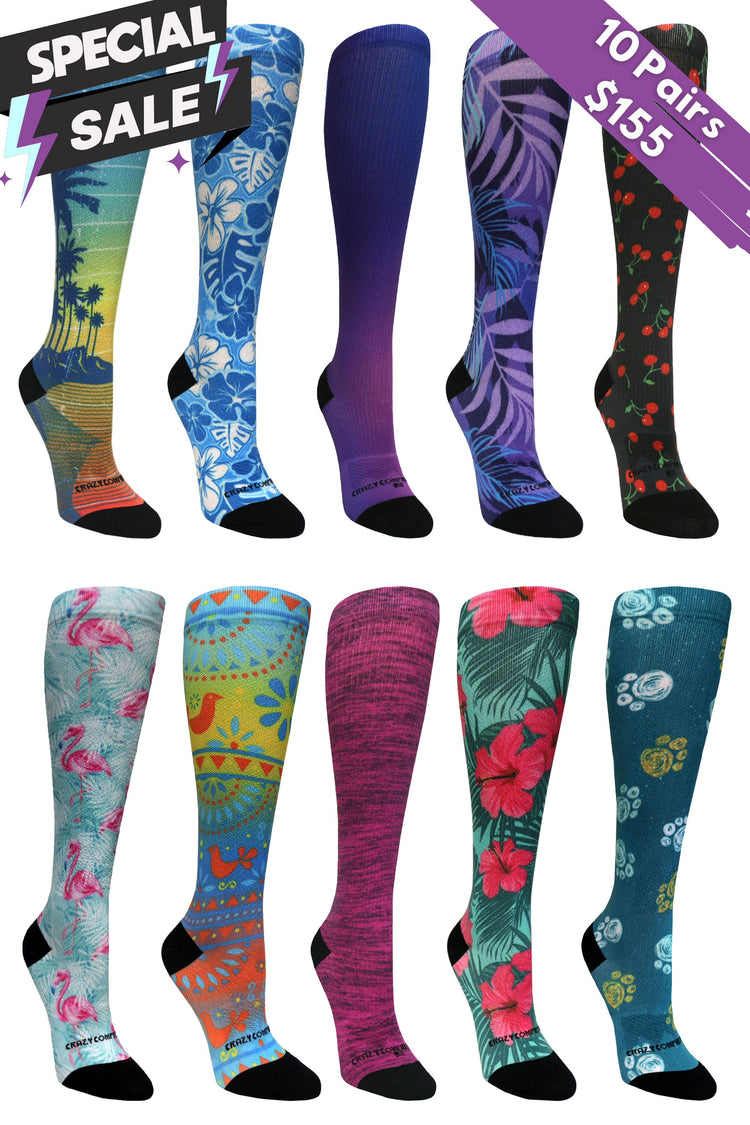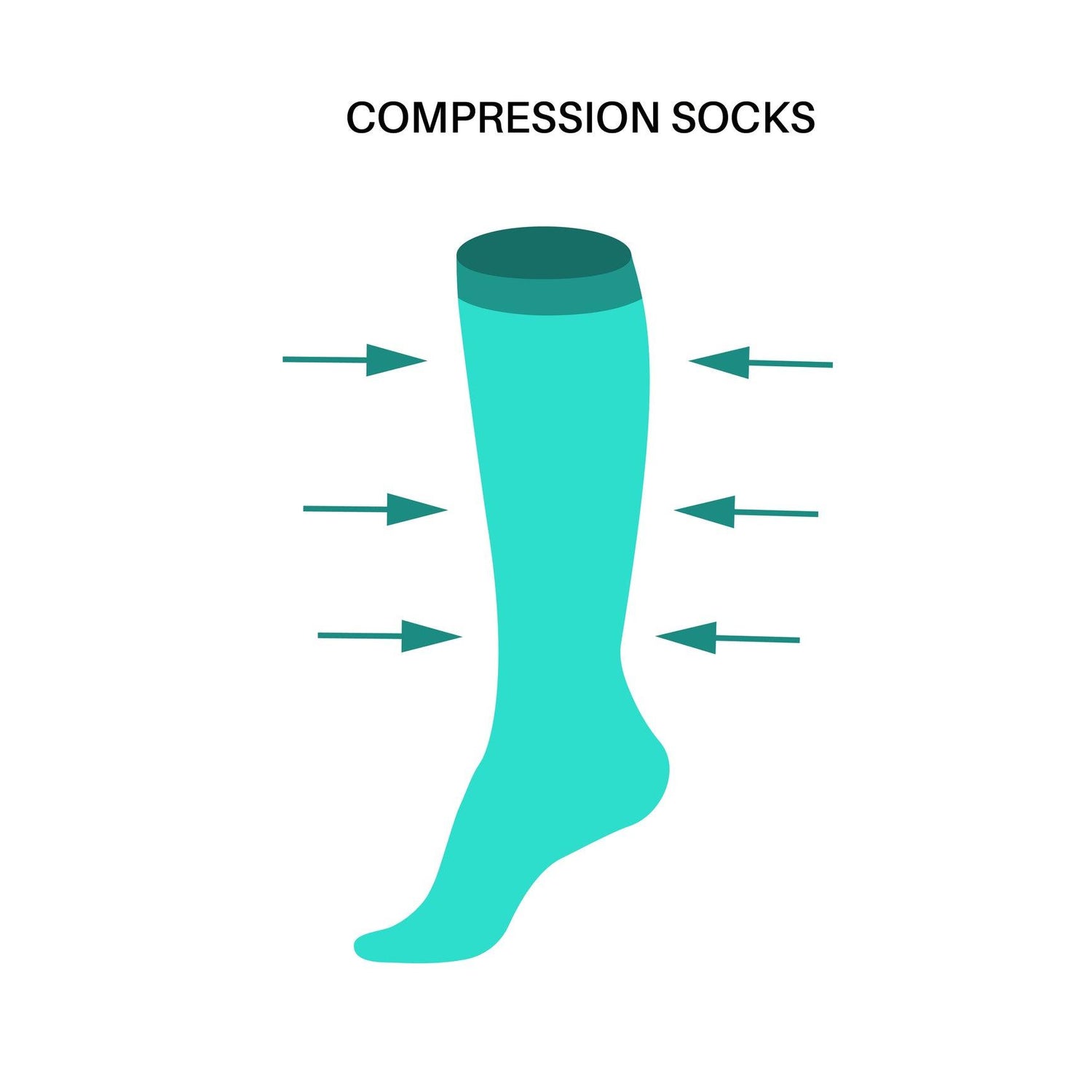Do you have a major or minor surgery coming up? Is that surgery going to affect your lower legs and feet? Your doctor or surgeon may recommend that you wear compression socks after your surgery to help boost your recovery.
What procedures could benefit from the use of compression socks?
• General surgery
• Gynecological surgery
• Neurosurgery
• Elective Hip Replacement
• Elective Knee Replacement
• Varicose Vein surgery.
But do they do anything? Are there benefits of compression socks after surgery?
Compression socks after surgery do offer benefits; four of them are surprisingly distinct for post-surgery patients. Compression socks after surgery can reduce swelling and protect against DVT.
However, before we dive into the benefits of compression socks after surgery, we want to remind our readers that when it comes to compression socks and surgery, it's crucial you only do so with the explicit instruction of your doctor. If your doctor has not suggested or told you to wear compression socks, or if you are unsure, talk to your doctor before deciding to wear them!
Now that you know, let's get into the benefits.
1. Promotes Better Circulation
Depending on your surgery, movement may be limited for recovery to help heal. Unfortunately, the little-to-no movement might help with healing, and it's not particularly good for your heart or circulation. Activity is crucial to get our hearts pumping more and stimulate venous blood flow by working muscles, yet when you are in too much pain or recovering, that's often difficult.
A pair of graduated compression socks encourage your blood to keep flowing by applying gentle pressure that tapers up your legs. This pressure helps venous circulation even when you cannot move. During recovery, this also prevents blood or fluids from pooling easily in your feet or legs.
2. Reduces Swelling
Some level of swelling is a typical and often expected side effect after surgery. However, extreme swelling is not and can hamper recovery and even lead to complications if unchecked. After surgery, wearing compression socks can help reduce swelling due to the gentle pressure of elastics woven into the fabric. This pressure slows or stops the skin from expanding, forcing the fluid to dissipate back into the body instead of settling in your feet, ankles, or lower legs that cause the swelling.
To benefit from the swelling reduction compression socks can give you, it's crucial to don them as soon as possible when waking up or before the swelling can start in the early morning. If your doctor instructs you to wear them at a different time, you should always follow their rules first and foremost.
3. Aid in the Prevention of DVT
DVT stands for deep vein thrombosis. DVT, also known as blood clots in the leg, thrombophlebitis, venous thrombosis, or venous thromboembolism, is when blood clots form in deep veins. When these blood clots form, there is a chance that they can break off and begin blocking blood vessels throughout the body. These blockages, known as embolisms, can be very dangerous when they form in the lungs.
Why is the risk for DVT greater after surgery? After surgery, the body tends to have less fluid. At the same time, trauma can activate our body's clotting mechanisms in our blood as the body begins the work to heal itself. Combined with the possibility of long periods of bed rest and immobility, these two factors increase the likelihood of developing DVT.
In many studies and medical literature, you'll find research explaining that hospitalized patients are more likely to develop DVT due to changes in the walls of blood vessels, changes in blood flow, and changes in the properties of blood. Factors that can cause these changes include: immobilization, decreased fluid intake, and excessive body fluid loss. Trauma to the body and the surgery itself can also cause activation of the coagulation system, leading to a higher risk of DVT.
Because of this increased risk, many doctors will recommend compression sock therapy to prevent the formation of blood clots during the healing process.
While everyone can benefit from compression to aid in lowering the risk for DVT, some groups of people are particularly vulnerable to DVT. The groups most at risk for DVT after surgery include:
• People with inherited blood disorders
• Those undergoing hormone therapy or taking birth control pills
• People with injury to a deep vein, a broken bone, or other trauma
• People who have experienced prolonged bed rest or travel
• Pregnant women or women who have given birth in the past 6 weeks
• Those treated for cancer
• Anyone with a central venous catheter
• Those over 60
• Overweight or obese people
• Smokers
• Those with a history of DVT
How do compression socks combat the risks of DVT? Their gentle pressure on your legs reduces the diameter of the veins. Through our smaller vessels, blood flows with a much greater velocity. In turn, you'll experience improved blood circulation when wearing compression socks. Without the gentle pressure, your blood could begin to accumulate in your lower legs.
4. Aid in a Safer Recovery
When you consider the above three benefits, they combine to make your recovery safer overall. Compression socks recommended to you after surgery by a doctor hold a wealth of healing benefits. Circulation improvements, swelling reduction, DVT prevention, and even helping prevent spider or varicose veins can all assist your body in speeding up your healing time. An additional positive to using compression socks after surgery is that they are a relatively affordable, noninvasive medical treatment accessible to everyone.
Recovering from surgery can often be a long, painful and tiring journey. At Crazy Compression, we want to help ease the way for bodies of all kinds, from healthy and active, to disabled and those with chronic illness—wearing compression socks can help ease symptoms and pain for many conditions.
If you've been recommended a pair of compression socks for surgery recovery, are looking for compression to help aid symptoms and manage pain, or bring comfort to tired feet, we're ready to help! For any questions, feel free to reach out to us.

































Leave a comment
This site is protected by hCaptcha and the hCaptcha Privacy Policy and Terms of Service apply.